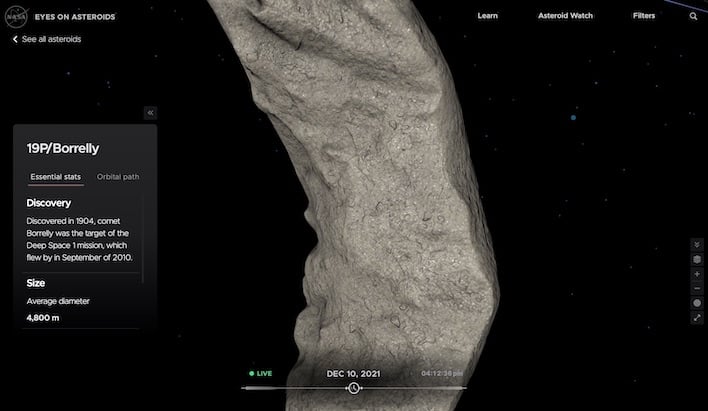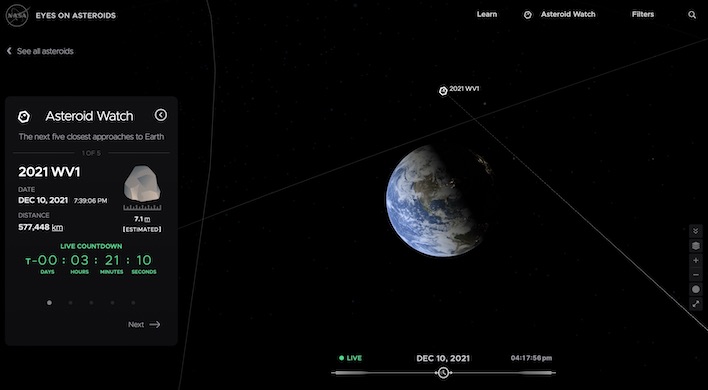NASA’s Cool New Eyes On Asteroids App Let’s You Check Out Near Earth Objects In 3D
There's a new neighborhood watch available, courtesy of NASA. This program is, of course, a bit more far-reaching than just who’s cruising down your street though. Through a web-based app, NASA is letting you explore a 3D view of objects in our orbital neighborhood.
Twice each day, NASA will update its new Eyes on Asteroids web app with the latest data on asteroids, comets, and spacecraft near our own planet, Earth. By default, your 3D view has our Sun at the center with the orbits of planets shown in different colors.
When you find an object you want to know more about, just click or tap on it. You’ll see that object’s close-up image along with a short summary of its history. Within the web app, you can zoom in or out, choose which layers to view, or filter what you see.
Features of Eyes on Asteroids
A special “Asteroid Watch” function gives you the next five closest approaches to Earth. As of this writing, asteroid 2021 WV1 will come within 557,448 km of Earth in a bit more than 3 hours.
The Eyes on Asteroids app also offers a “Learn” feature. This gives you a deeper dive into what asteroids are, what makes for a “close approach,” and more.
“We wanted Eyes on Asteroids to be as user-friendly as possible while telling the stories about humanity’s exploration of these fascinating objects,” said Jason Craig, technical producer of the Visualization Technology Applications and Development team at NASA’s Jet Propulsion Laboratory in Southern California, which developed Eyes. “Every NEO can be found inside the app, as can most of the spacecraft that have visited these objects.”
In the live view, you can see the most current information about Near Earth Objects (NEOs). You can also scrub along the timeline at the bottom to move backwards and forwards in time.
What Browsers Support This Spacefaring Voyage?
According to NASA, you can use Eyes on Asteroids on any smartphone, tablet, or computer with an internet connection. It works great in both Safari and Google Chrome under iOS 15.2, with full support for pinch to zoom and dragging the 3D view around.
Since the app gets twice-daily updates, you can be confident that any new discoveries will show up as soon as NASA calculates their orbits.



